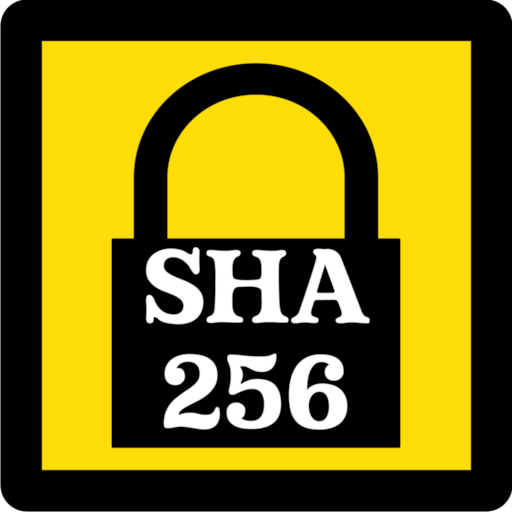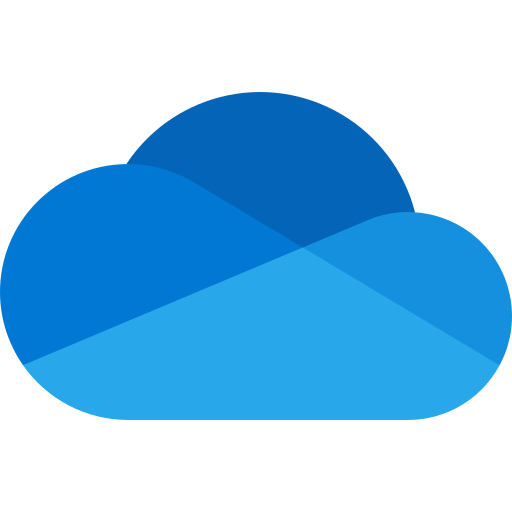pronounced “screen copy“
This application mirrors Android devices (video and audio) connected via USB or over TCP/IP, and allows to control the device with the keyboard and the mouse of the computer. It does not require any root access. It works on Linux, Windows and macOS.
https://github.com/Genymobile/scrcpy
Version
v3.0
Release Date
2024-11-24
SHA-256 checksum file*
Official Download (Windows 64 bit)
Alternative Download (Windows 64 bit)
For additional platforms, please visit https://github.com/Genymobile/scrcpy#get-the-app.

Changes since v2.7:
- Various technical fixes
- Add virtual display feature (#5370, #5506, #1887, #4528, #5137)
- Launch Android app on start (#5370)
- Add OpenGL filters (#5455)
- Add –capture-orientation to replace –lock-video-orientation
(which was broken on Android 14) (#4011, #4426, #5455) - Fix –crop on Android 14 (#4162, #5387, #5455)
- Handle virtual display rotation (#5428, #5455)
- Add –angle to apply a custom rotation (#4135, #4345, #4658, #5455)
- Add –screen-off-timeout (#5447)
- Adapt “turn screen off” for Android 15 (#3927, #5418)
- Add shortcut Ctrl+Shift+click-and-move for horizontal tilt (#5317)
- Add shortcut MOD+Shift+r to reset video capture/encoding (#5432)
- Forward Alt and Super with SDK Keyboard (#5318, #5322)
- Add more details to –list-encoders output (#5416)
- Add option to disable virtual display system decorations (#5494)
- Fix –time-limit overflow on Windows (#5355)
- Fix “does not match caller’s uid 2000” error (#4639, #5476)
- Accept filenames containing ‘:’ when recording (#5487, #5499)
- Disable mouse by default if no video playback (#5410)
- Rename –display-buffer to –video-buffer (#5403, #5420)
- Listen to display changed events (#5415, #161, #1918, #4152, #5362)
- Adapt server debugging for Android >= 11 (#5346, #5466)
- Upgrade FFmpeg to 7.1 (#5332)
- Upgrade SDL to 2.30.9
- Upgrade platform-tools (adb) to 35.0.2
- Build releases via GitHub Actions (#5306, #4490)
- Release static builds for Linux and macOS (#5515, #1733, #3235, #4489, #5327)
Highlights
Virtual display
By default, scrcpy mirrors the device screen.
With this new feature (#5370), it is now possible to mirror a new virtual display, with a custom size:
scrcpy --new-display=1920x1080 scrcpy --new-display=1920x1080/420 # force 420 dpi scrcpy --new-display # use the main display size and density scrcpy --new-display=/240 # use the main display size and 240 dpi
On some devices, a launcher is available in the virtual display.
When no launcher is available, the virtual display is empty. In that case, you must start an Android app.
For example:
scrcpy --new-display=1920x1080 --start-app=org.videolan.vlc
To list the Android apps installed on the device:
scrcpy --list-apps
For convenience, you can also select an app by its name using a ? prefix:
scrcpy --start-app=?firefox
However, retrieving app names may take some time (sometimes several seconds), so passing the package name is recommended.
On-device OpenGL filters
Scrcpy can now transform the captured video stream before encoding by applying OpenGL filters directly on the device. This has made it possible to fix several issues and implement new features, as described below (more details in #5455).
Crop
The --crop option was broken for devices running Android >= 14 (#4162). It has been reimplemented using OpenGL filters internally.
Its usage remains the same:
scrcpy --crop=800:600:100:100
It now also works for camera and virtual displays.
Capture orientation
The --lock-video-orientation option was broken for devices running Android >= 14 (#4011).
It has been replaced by a more general option --capture-orientation, implemented using OpenGL filters:
scrcpy --capture-orientation=0 scrcpy --capture-orientation=90 # 90° clockwise scrcpy --capture-orientation=180 # 180° scrcpy --capture-orientation=270 # 270° clockwise scrcpy --capture-orientation=flip0 # hflip scrcpy --capture-orientation=flip90 # hflip + 90° clockwise scrcpy --capture-orientation=flip180 # hflip + 180° scrcpy --capture-orientation=flip270 # hflip + 270° clockwise
The capture orientation can be locked by using a @ prefix, so that a physical device rotation does not change the captured video orientation:
scrcpy --capture-orientation=@ # locked to the initial orientation
scrcpy --capture-orientation=@0 # locked to 0°
scrcpy --capture-orientation=@90 # locked to 90° clockwise
scrcpy --capture-orientation=@180 # locked to 180°
scrcpy --capture-orientation=@270 # locked to 270° clockwise
scrcpy --capture-orientation=@flip0 # locked to hflip
scrcpy --capture-orientation=@flip90 # locked to hflip + 90° clockwise
scrcpy --capture-orientation=@flip180 # locked to hflip + 180°
scrcpy --capture-orientation=@flip270 # locked to hflip + 270° clockwise
Now, it also works for camera (fixing #4426) and virtual displays.
Custom rotation
A new option --angle allows to rotate the content by a custom angle. Combined with --crop, this is especially useful for mirroring the Meta Quest 3 (#4135, #4345, #4658).
Virtual display rotation
The new virtual display feature initially could not rotate. The rotation has been implemented using OpenGL filters.
(That is what triggered the development of OpenGL filters.)
Like previously, the current app can be rotated by MOD+r (shortcuts).
Screen off timeout
The existing option --stay-awake only keeps the device awake *while it is plugged in, meaning it typically does not work over TCP/IP.
A new option, --screen-off-timeout, modifies the screen-off timeout setting while scrcpy is running and restores it on exit:
scrcpy --screen-off-timeout=300 # 300 seconds (5 minutes)
Static builds
For convenience, static builds are now provided for Linux and macOS (#5515).
More targets might be added in the future.
This is still experimental for now, so if you encounter problems, please report them.
Features you might have missed
If you haven’t tried scrcpy in a while, here are some features introduced in the 2.x versions that you might have missed (check the release notes to each version for more details):
- scrcpy 2.7: gamepad support
- scrcpy 2.6: audio duplication
- scrcpy 2.5: control-only & mouse improvements
- scrcpy 2.4: UHID keyboard and mouse
- scrcpy 2.3: camera support improvements
- scrcpy 2.2: camera capture
- scrcpy 2.1: microphone capture
- scrcpy 2.0: audio forwarding
scrcpy 3.0 <https://github.com/Genymobile/scrcpy>
Usage: scrcpy.exe [options]
Options:
--always-on-top
Make scrcpy window always on top (above other windows).
--angle=degrees
Rotate the video content by a custom angle, in degrees (clockwise).
--audio-bit-rate=value
Encode the audio at the given bit rate, expressed in bits/s. Unit
suffixes are supported: 'K' (x1000) and 'M' (x1000000).
Default is 128K (128000).
--audio-buffer=ms
Configure the audio buffering delay (in milliseconds).
Lower values decrease the latency, but increase the likelihood of buffer
underrun (causing audio glitches).
Default is 50.
--audio-codec=name
Select an audio codec (opus, aac, flac or raw).
Default is opus.
--audio-codec-options=key[:type]=value[,...]
Set a list of comma-separated key:type=value options for the device
audio encoder.
The possible values for 'type' are 'int' (default), 'long', 'float' and
'string'.
The list of possible codec options is available in the Android
documentation:
<https://d.android.com/reference/android/media/MediaFormat>
--audio-dup
Duplicate audio (capture and keep playing on the device).
This feature is only available with --audio-source=playback.
--audio-encoder=name
Use a specific MediaCodec audio encoder (depending on the codec provided
by --audio-codec).
The available encoders can be listed by --list-encoders.
--audio-source=source
Select the audio source (output, mic or playback).
The "output" source forwards the whole audio output, and disables
playback on the device.
The "playback" source captures the audio playback (Android apps can
opt-out, so the whole output is not necessarily captured).
The "mic" source captures the microphone.
Default is output.
--audio-output-buffer=ms
Configure the size of the SDL audio output buffer (in milliseconds).
If you get "robotic" audio playback, you should test with a higher value
(10). Do not change this setting otherwise.
Default is 5.
-b, --video-bit-rate=value
Encode the video at the given bit rate, expressed in bits/s. Unit
suffixes are supported: 'K' (x1000) and 'M' (x1000000).
Default is 8M (8000000).
--camera-ar=ar
Select the camera size by its aspect ratio (+/- 10%).
Possible values are "sensor" (use the camera sensor aspect ratio),
"<num>:<den>" (e.g. "4:3") or "<value>" (e.g. "1.6").
--camera-facing=facing
Select the device camera by its facing direction.
Possible values are "front", "back" and "external".
--camera-fps=value
Specify the camera capture frame rate.
If not specified, Android's default frame rate (30 fps) is used.
--camera-high-speed
Enable high-speed camera capture mode.
This mode is restricted to specific resolutions and frame rates, listed
by --list-camera-sizes.
--camera-id=id
Specify the device camera id to mirror.
The available camera ids can be listed by:
scrcpy --list-cameras
--camera-size=<width>x<height>
Specify an explicit camera capture size.
--capture-orientation=value
Set the capture video orientation.
Possible values are 0, 90, 180, 270, flip0, flip90, flip180 and flip270,
possibly prefixed by '@'.
The number represents the clockwise rotation in degrees; the flip"
keyword applies a horizontal flip before the rotation.
If a leading '@' is passed (@90) for display capture, then the rotation
is locked, and is relative to the natural device orientation.
If '@' is passed alone, then the rotation is locked to the initial
device orientation.
Default is 0.
--crop=width:height:x:y
Crop the device screen on the server.
The values are expressed in the device natural orientation (typically,
portrait for a phone, landscape for a tablet).
-d, --select-usb
Use USB device (if there is exactly one, like adb -d).
Also see -e (--select-tcpip).
--disable-screensaver
Disable screensaver while scrcpy is running.
--display-id=id
Specify the device display id to mirror.
The available display ids can be listed by:
scrcpy --list-displays
Default is 0.
--display-orientation=value
Set the initial display orientation.
Possible values are 0, 90, 180, 270, flip0, flip90, flip180 and flip270.
The number represents the clockwise rotation in degrees; the "flip"
keyword applies a horizontal flip before the rotation.
Default is 0.
-e, --select-tcpip
Use TCP/IP device (if there is exactly one, like adb -e).
Also see -d (--select-usb).
-f, --fullscreen
Start in fullscreen.
--force-adb-forward
Do not attempt to use "adb reverse" to connect to the device.
-G
Same as --gamepad=uhid, or --gamepad=aoa if --otg is set.
--gamepad=mode
Select how to send gamepad inputs to the device.
Possible values are "disabled", "uhid" and "aoa".
"disabled" does not send gamepad inputs to the device.
"uhid" simulates physical HID gamepads using the Linux UHID kernel
module on the device.
"aoa" simulates physical gamepads using the AOAv2 protocol.It may only
work over USB.
Also see --keyboard and --mouse.
-h, --help
Print this help.
-K
Same as --keyboard=uhid, or --keyboard=aoa if --otg is set.
--keyboard=mode
Select how to send keyboard inputs to the device.
Possible values are "disabled", "sdk", "uhid" and "aoa".
"disabled" does not send keyboard inputs to the device.
"sdk" uses the Android system API to deliver keyboard events to
applications.
"uhid" simulates a physical HID keyboard using the Linux UHID kernel
module on the device.
"aoa" simulates a physical keyboard using the AOAv2 protocol. It may
only work over USB.
For "uhid" and "aoa", the keyboard layout must be configured (once and
for all) on the device, via Settings -> System -> Languages and input ->
Physical keyboard. This settings page can be started directly using the
shortcut MOD+k (except in OTG mode) or by executing: `adb shell am start
-a android.settings.HARD_KEYBOARD_SETTINGS`.
This option is only available when a HID keyboard is enabled (or a
physical keyboard is connected).
Also see --mouse and --gamepad.
--kill-adb-on-close
Kill adb when scrcpy terminates.
--legacy-paste
Inject computer clipboard text as a sequence of key events on Ctrl+v
(like MOD+Shift+v).
This is a workaround for some devices not behaving as expected when
setting the device clipboard programmatically.
--list-apps
List Android apps installed on the device.
--list-cameras
List device cameras.
--list-camera-sizes
List the valid camera capture sizes.
--list-displays
List device displays.
--list-encoders
List video and audio encoders available on the device.
-m, --max-size=value
Limit both the width and height of the video to value. The other
dimension is computed so that the device aspect-ratio is preserved.
Default is 0 (unlimited).
-M
Same as --mouse=uhid, or --mouse=aoa if --otg is set.
--max-fps=value
Limit the frame rate of screen capture (officially supported since
Android 10, but may work on earlier versions).
--mouse=mode
Select how to send mouse inputs to the device.
Possible values are "disabled", "sdk", "uhid" and "aoa".
"disabled" does not send mouse inputs to the device.
"sdk" uses the Android system API to deliver mouse eventsto
applications.
"uhid" simulates a physical HID mouse using the Linux UHID kernel module
on the device.
"aoa" simulates a physical mouse using the AOAv2 protocol. It may only
work over USB.
In "uhid" and "aoa" modes, the computer mouse is captured to control the
device directly (relative mouse mode).
LAlt, LSuper or RSuper toggle the capture mode, to give control of the
mouse back to the computer.
Also see --keyboard and --gamepad.
--mouse-bind=xxxx[:xxxx]
Configure bindings of secondary clicks.
The argument must be one or two sequences (separated by ':') of exactly
4 characters, one for each secondary click (in order: right click,
middle click, 4th click, 5th click).
The first sequence defines the primary bindings, used when a mouse
button is pressed alone. The second sequence defines the secondary
bindings, used when a mouse button is pressed while the Shift key is
held.
If the second sequence of bindings is omitted, then it is the same as
the first one.
Each character must be one of the following:
'+': forward the click to the device
'-': ignore the click
'b': trigger shortcut BACK (or turn screen on if off)
'h': trigger shortcut HOME
's': trigger shortcut APP_SWITCH
'n': trigger shortcut "expand notification panel"
Default is 'bhsn:++++' for SDK mouse, and '++++:bhsn' for AOA and UHID.
-n, --no-control
Disable device control (mirror the device in read-only).
-N, --no-playback
Disable video and audio playback on the computer (equivalent to
--no-video-playback --no-audio-playback).
--new-display[=[<width>x<height>][/<dpi>]]
Create a new display with the specified resolution and density. If not
provided, they default to the main display dimensions and DPI.
Examples:
--new-display=1920x1080
--new-display=1920x1080/420 # force 420 dpi
--new-display # main display size and density
--new-display=/240 # main display size and 240 dpi
--no-audio
Disable audio forwarding.
--no-audio-playback
Disable audio playback on the computer.
--no-cleanup
By default, scrcpy removes the server binary from the device and
restores the device state (show touches, stay awake and power mode) on
exit.
This option disables this cleanup.
--no-clipboard-autosync
By default, scrcpy automatically synchronizes the computer clipboard to
the device clipboard before injecting Ctrl+v, and the device clipboard
to the computer clipboard whenever it changes.
This option disables this automatic synchronization.
--no-downsize-on-error
By default, on MediaCodec error, scrcpy automatically tries again with a
lower definition.
This option disables this behavior.
--no-key-repeat
Do not forward repeated key events when a key is held down.
--no-mipmaps
If the renderer is OpenGL 3.0+ or OpenGL ES 2.0+, then mipmaps are
automatically generated to improve downscaling quality. This option
disables the generation of mipmaps.
--no-mouse-hover
Do not forward mouse hover (mouse motion without any clicks) events.
--no-power-on
Do not power on the device on start.
--no-vd-system-decorations
Disable virtual display system decorations flag.
--no-video
Disable video forwarding.
--no-video-playback
Disable video playback on the computer.
--no-window
Disable scrcpy window. Implies --no-video-playback and --no-control.
--orientation=value
Same as --display-orientation=value --record-orientation=value.
--otg
Run in OTG mode: simulate physical keyboard and mouse, as if the
computer keyboard and mouse were plugged directly to the device via an
OTG cable.
In this mode, adb (USB debugging) is not necessary, and mirroring is
disabled.
LAlt, LSuper or RSuper toggle the mouse capture mode, to give control of
the mouse back to the computer.
Keyboard and mouse may be disabled separately using--keyboard=disabled
and --mouse=disabled.
It may only work over USB.
See --keyboard, --mouse and --gamepad.
-p, --port=port[:port]
Set the TCP port (range) used by the client to listen.
Default is 27183:27199.
--pause-on-exit[=mode]
Configure pause on exit. Possible values are "true" (always pause on
exit), "false" (never pause on exit) and "if-error" (pause only if an
error occurred).
This is useful to prevent the terminal window from automatically
closing, so that error messages can be read.
Default is "false".
Passing the option without argument is equivalent to passing "true".
--power-off-on-close
Turn the device screen off when closing scrcpy.
--prefer-text
Inject alpha characters and space as text events instead of key events.
This avoids issues when combining multiple keys to enter a special
character, but breaks the expected behavior of alpha keys in games
(typically WASD).
--print-fps
Start FPS counter, to print framerate logs to the console. It can be
started or stopped at any time with MOD+i.
--push-target=path
Set the target directory for pushing files to the device by drag & drop.
It is passed as is to "adb push".
Default is "/sdcard/Download/".
-r, --record=file.mp4
Record screen to file.
The format is determined by the --record-format option if set, or by the
file extension.
--raw-key-events
Inject key events for all input keys, and ignore text events.
--record-format=format
Force recording format (mp4, mkv, m4a, mka, opus, aac, flac or wav).
--record-orientation=value
Set the record orientation.
Possible values are 0, 90, 180 and 270. The number represents the
clockwise rotation in degrees.
Default is 0.
--render-driver=name
Request SDL to use the given render driver (this is just a hint).
Supported names are currently "direct3d", "opengl", "opengles2",
"opengles", "metal" and "software".
<https://wiki.libsdl.org/SDL_HINT_RENDER_DRIVER>
--require-audio
By default, scrcpy mirrors only the video when audio capture fails on
the device. This option makes scrcpy fail if audio is enabled but does
not work.
-s, --serial=serial
The device serial number. Mandatory only if several devices are
connected to adb.
-S, --turn-screen-off
Turn the device screen off immediately.
--screen-off-timeout=seconds
Set the screen off timeout while scrcpy is running (restore the initial
value on exit).
--shortcut-mod=key[+...][,...]
Specify the modifiers to use for scrcpy shortcuts.
Possible keys are "lctrl", "rctrl", "lalt", "ralt", "lsuper" and
"rsuper".
Several shortcut modifiers can be specified, separated by ','.
For example, to use either LCtrl or LSuper for scrcpy shortcuts, pass
"lctrl,lsuper".
Default is "lalt,lsuper" (left-Alt or left-Super).
--start-app=name
Start an Android app, by its exact package name.
Add a '?' prefix to select an app whose name starts with the given name,
case-insensitive (retrieving app names on the device may take some
time):
scrcpy --start-app=?firefox
Add a '+' prefix to force-stop before starting the app:
scrcpy --new-display --start-app=+org.mozilla.firefox
Both prefixes can be used, in that order:
scrcpy --start-app=+?firefox
-t, --show-touches
Enable "show touches" on start, restore the initial value on exit.
It only shows physical touches (not clicks from scrcpy).
--tcpip[=ip[:port]]
Configure and reconnect the device over TCP/IP.
If a destination address is provided, then scrcpy connects to this
address before starting. The device must listen on the given TCP port
(default is 5555).
If no destination address is provided, then scrcpy attempts to find the
IP address of the current device (typically connected over USB), enables
TCP/IP mode, then connects to this address before starting.
--time-limit=seconds
Set the maximum mirroring time, in seconds.
--tunnel-host=ip
Set the IP address of the adb tunnel to reach the scrcpy server. This
option automatically enables --force-adb-forward.
Default is localhost.
--tunnel-port=port
Set the TCP port of the adb tunnel to reach the scrcpy server. This
option automatically enables --force-adb-forward.
Default is 0 (not forced): the local port used for establishing the
tunnel will be used.
-v, --version
Print the version of scrcpy.
-V, --verbosity=value
Set the log level (verbose, debug, info, warn or error).
Default is info.
--v4l2-sink=/dev/videoN
Output to v4l2loopback device.
This feature is only available on Linux.
--v4l2-buffer=ms
Add a buffering delay (in milliseconds) before pushing frames. This
increases latency to compensate for jitter.
This option is similar to --video-buffer, but specific to V4L2 sink.
Default is 0 (no buffering).
This option is only available on Linux.
--video-buffer=ms
Add a buffering delay (in milliseconds) before displaying video frames.
This increases latency to compensate for jitter.
Default is 0 (no buffering).
--video-codec=name
Select a video codec (h264, h265 or av1).
Default is h264.
--video-codec-options=key[:type]=value[,...]
Set a list of comma-separated key:type=value options for the device
video encoder.
The possible values for 'type' are 'int' (default), 'long', 'float' and
'string'.
The list of possible codec options is available in the Android
documentation:
<https://d.android.com/reference/android/media/MediaFormat>
--video-encoder=name
Use a specific MediaCodec video encoder (depending on the codec provided
by --video-codec).
The available encoders can be listed by --list-encoders.
--video-source=source
Select the video source (display or camera).
Camera mirroring requires Android 12+.
Default is display.
-w, --stay-awake
Keep the device on while scrcpy is running, when the device is plugged
in.
--window-borderless
Disable window decorations (display borderless window).
--window-title=text
Set a custom window title.
--window-x=value
Set the initial window horizontal position.
Default is "auto".
--window-y=value
Set the initial window vertical position.
Default is "auto".
--window-width=value
Set the initial window width.
Default is 0 (automatic).
--window-height=value
Set the initial window height.
Default is 0 (automatic).
Shortcuts:
In the following list, MOD is the shortcut modifier. By default, it's (left)
Alt or (left) Super, but it can be configured by --shortcut-mod (see above).
MOD+f
Switch fullscreen mode
MOD+Left
Rotate display left
MOD+Right
Rotate display right
MOD+Shift+Left
MOD+Shift+Right
Flip display horizontally
MOD+Shift+Up
MOD+Shift+Down
Flip display vertically
MOD+z
Pause or re-pause display
MOD+Shift+z
Unpause display
MOD+Shift+r
Reset video capture/encoding
MOD+g
Resize window to 1:1 (pixel-perfect)
MOD+w
Double-click on black borders
Resize window to remove black borders
MOD+h
Middle-click
Click on HOME
MOD+b
MOD+Backspace
Right-click (when screen is on)
Click on BACK
MOD+s
4th-click
Click on APP_SWITCH
MOD+m
Click on MENU
MOD+Up
Click on VOLUME_UP
MOD+Down
Click on VOLUME_DOWN
MOD+p
Click on POWER (turn screen on/off)
Right-click (when screen is off)
Power on
MOD+o
Turn device screen off (keep mirroring)
MOD+Shift+o
Turn device screen on
MOD+r
Rotate device screen
MOD+n
5th-click
Expand notification panel
MOD+Shift+n
Collapse notification panel
MOD+c
Copy to clipboard (inject COPY keycode, Android >= 7 only)
MOD+x
Cut to clipboard (inject CUT keycode, Android >= 7 only)
MOD+v
Copy computer clipboard to device, then paste (inject PASTE keycode,
Android >= 7 only)
MOD+Shift+v
Inject computer clipboard text as a sequence of key events
MOD+k
Open keyboard settings on the device (for HID keyboard only)
MOD+i
Enable/disable FPS counter (print frames/second in logs)
Ctrl+click-and-move
Pinch-to-zoom and rotate from the center of the screen
Shift+click-and-move
Tilt vertically (slide with 2 fingers)
Ctrl+Shift+click-and-move
Tilt horizontally (slide with 2 fingers)
Drag & drop APK file
Install APK from computer
Drag & drop non-APK file
Push file to device (see --push-target)
Environment variables:
ADB
Path to adb executable
ANDROID_SERIAL
Device serial to use if no selector (-s, -d, -e or --tcpip=<addr>) is
specified
SCRCPY_ICON_PATH
Path to the program icon
SCRCPY_SERVER_PATH
Path to the server binary
Exit status:
0 Normal program termination
1 Start failure
2 Device disconnected while runningAs precondition, please read the guide “How to use Android Debug Bridge” first.
scrcpy Wiki
scrcpy Shortcuts
Download Zidoo.png
Windows Terminal
@ECHO OFF
SETLOCAL
SET SCRCPY_ICON_PATH=<path to image>\Zidoo.png
SET SCRCPY_OPTIONS=[options]
scrcpy-noconsole.vbs %SCRCPY_OPTIONS% --tcpip="<IP-Adress>:5555" --window-title="<Player name>"@ECHO OFF
SETLOCAL
SET SCRCPY_ICON_PATH=K:\Zidoo\Pictures\Zidoo.png
SET SCRCPY_OPTIONS=--no-cleanup --video-bit-rate=15M --video-encoder 'OMX.realtek.video.enc.avc' --no-audio --force-adb-forward --keyboard=uhid
scrcpy-noconsole.vbs %SCRCPY_OPTIONS% --tcpip="zidoo-x9s:5555" --window-title="X9S"@ECHO OFF
SETLOCAL
SET SCRCPY_ICON_PATH=K:\Zidoo\Pictures\Zidoo.png
SET SCRCPY_OPTIONS=--no-cleanup --video-bit-rate=15M --video-encoder 'OMX.realtek.video.enc.avc' --no-audio --force-adb-forward --keyboard=uhid
scrcpy-noconsole.vbs %SCRCPY_OPTIONS% --tcpip="zidoo-z9s:5555" --window-title="Z9S"@ECHO OFF
SETLOCAL
SET SCRCPY_ICON_PATH=K:\Zidoo\Pictures\Zidoo.png
SET SCRCPY_OPTIONS=--no-cleanup --video-bit-rate=15M --video-encoder 'OMX.google.h264.encoder' --no-audio --keyboard=uhid
scrcpy-noconsole.vbs %SCRCPY_OPTIONS% --tcpip="zidoo-z9x:5555" --window-title="Z9X"@ECHO OFF
SETLOCAL
SET SCRCPY_ICON_PATH=K:\Zidoo\Pictures\Zidoo.png
SET SCRCPY_OPTIONS=--no-cleanup --video-bit-rate=15M --video-encoder='OMX.realtek.video.enc.avc' --no-audio --keyboard=uhid
scrcpy-noconsole.vbs %SCRCPY_OPTIONS% --tcpip="zidoo-z9xpro:5555" --window-title="Z9X Pro"




